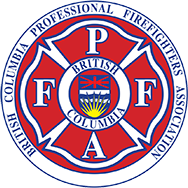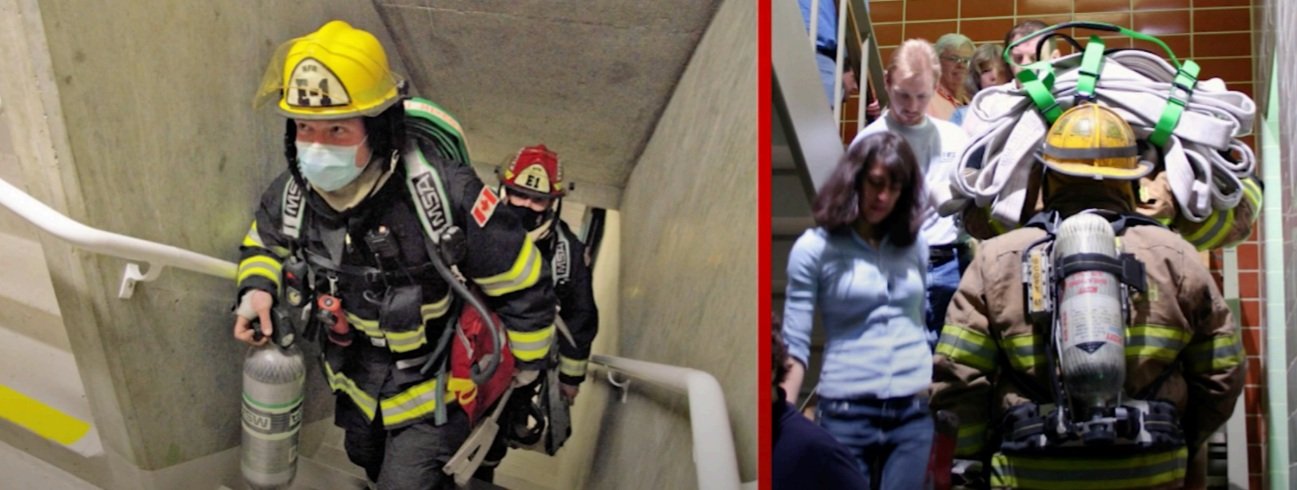BC Provincial Government Makes Changes to BC Building Code Against the Opinion of Public Safety Professionals
BACKGROUND
BUILDING CODES - Single Egress Stairway (SES) Designs
Governments at every level are looking to scale up new builds to address the housing crisis across Canada. The IAFF urges governments and building code stakeholders to consider an evidence based approach for public and fire fighter safety when addressing building designs such as single-egress stairways (SES) in multi-residential buildings.
Proposed Change to a Single Egress Stairway Plan Design
The Provincial Government issued a news release on (SES) (January 2024) and released it’s final report (June 2024),
The BC Professional Fire Fighters’ Association (BCPFFA), Fire Chiefs Association of BC (FCABC), Office of the Fire Commissioner (OFC) continued to address the issues of SES.
BCPFFA President Schierling issued a letter to the Ministry of Housing and it a comprehensive position paper on SES in May 2024.
The BCPFFA and FCABC have requested a meeting with the Premier and the Minister of Housing to further discuss the two associations concerns.
With the help of IAFF Codes and Standards Representative and Local 18 Member James Johnson, the BCPFFA and FCABC have drafted a joint Executive Summary of the consultant’s final report.
The BCPFFA strongly recommends that sufficient exits be put in place to meet the needs of occupants to evacuate safely in the event of an emergency and to provide a safe place for fire fighters to conduct fire fighting operations (and occupant rescue) while protecting both occupants and firefighters from the undue risk that comes with single exits.
In coordination with the International Association of Fire Fighters (IAFF), International Metro Chiefs Association (IMCA), FCABC, OFC and Ontario Professional Fire Association (OPFFA) and (Ontario Fire Chiefs Association (OFFA) where this issue was occurring as well, we continue to advocate on a unified front, our position to oppose SES plan designs.
The IAFF agrees with the need to address affordable housing but not at the expense of fire fighter and occupant safety. We oppose the introduction of SES in multi-residential buildings and call on the federal, provincial, territorial, and municipal governments as well as the building code community to ensure that modifying design standards should never compromise fire fighter and public safety.
Single stairwells would severely affect the safety of fire fighters and occupants because:
Fires still happen in egress / exits and stairwells even in sprinklered buildings;
Fire fighters carrying necessary equipment up the stairway will impede occupant evacuation;
Occupants, including seniors or others with mobility issues, will impede firefighting operations;
Toxic smoke and fire can travel up non- compartmentalized stairways further impeding fleeing occupants;
Increased densification and reduced spatial separation of buildings may limit exterior rescue;
The systems need to work 100% of the time to achieve the level of safety they are proposing and we know that is not always the case;
Encapsulated lightweight wood-frame buildings risk fires that burn hotter and spread faster;
Firefighting operations and guidelines in North America are based on buildings with two independent stairwells. An overhaul of operational training would be required, with significant cost and safety implications.
In opposing this effort, the IAFF and the Metro Chiefs recognize the following:
Single means of egress places residents and fire fighters in danger;
Many fire departments lack the personnel and equipment required to combat these types of fires and to safely evacuate large numbers of people from elevated floors through a single means of egress;
Operations on ground or aerial ladders are hazardous for trained fire fighters. Removing occupants via ground or aerial devices places them at a greater risk of falls or being struck by debris from the fire scene, particularly individuals who may have mobility issues, disabilities, or other vulnerabilities;
Providing emergency responders access to only a single entryway for emergency operations negatively impacts rescue and fire suppression efforts, especially if the single exit is obstructed by occupants attempting to evacuate the structure. This removes the responder’s ability to utilize one stairwell for occupant egress and establish suppression operations in the second stairwell;
Many of these proposed multifamily dwellings serve our most vulnerable populations and place them at greater risk by degrading the standard of living and life safety;
Nationally developed consensus model codes and standards are promulgated based on real data from past tragedies, including fire deaths, injuries, and large dollar losses. In addition, modern fire science and technologies are used to create layered protection in buildings, ensuring and enhancing safety. To comply with portions of the code and promote the elimination of other parts will have devastating consequences;



